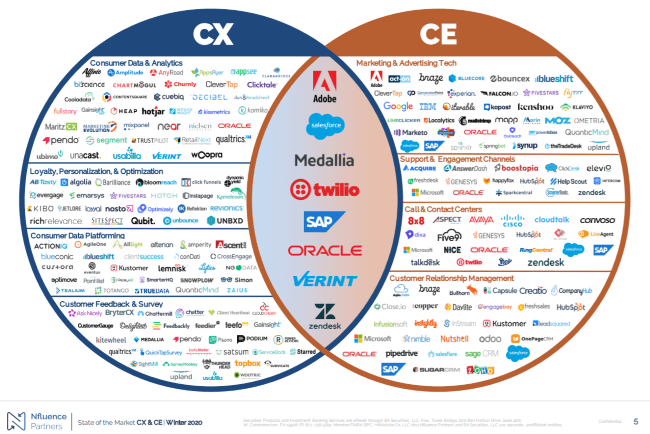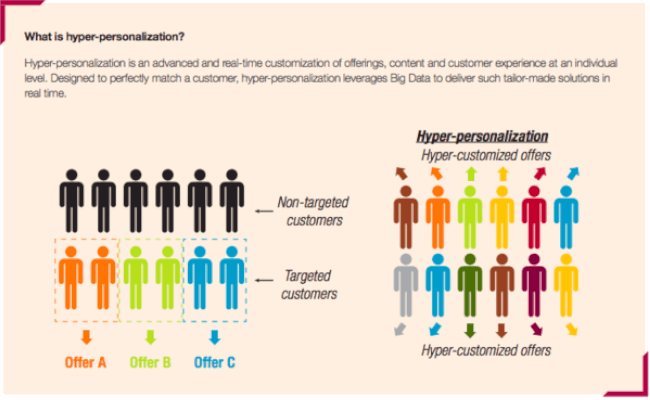It’s mid-2020 and we’re still in the midst of a raging Coronavirus pandemic, which has greatly affected the lives and livelihood of people and businesses all across the globe. That being said, this pandemic will likely also have a lasting impact on the state of the customer. In other words, when things ‘return to normal’, it won’t necessarily be ‘normal’…
So what kind of effect will the current crisis have on Customer Experience (CX)? Interestingly enough, while the impact on CX has varied greatly from industry to industry, one thing has stayed the same: customers are redefining the way in which they engage with brands.
Even before this crisis, PwC research showed that 59 percent of global consumers surveyed felt companies had lost touch with the human element of customer experience, and 75 percent of the customers surveyed preferred to interact with a human versus an automated machine. And now, people might be struggling to navigate the many friction points of the “new normal” and need a human touch even more.
Strategy-business.com
This means that now is the time for CX leaders to put themselves at the forefront of these shifts in customer behaviour, by not only keeping a pulse on changing preferences but also continuously innovating online journeys to meet the needs of these customers.

In this follow up to last year’s 2019 State of the Customer Experience post, we will bring you up to speed with what’s happening in the CX space in 2020, including top CX trends (including how customers are expected to engage with brands in the coming months). We will also highlight all of the movements happening in CX by laying out all of the major acquisitions and mergers that have taken place since our last post and share advice given by a number of experts in the CX space.
This is the State of the Customer Experience (CX) in 2020.
According to McKinsey,
Now is also the time for customer experience (CX) leaders to position themselves at the forefront of the longer-term shifts in consumer behavior that result from this crisis. Keeping a real-time pulse on changing customer preferences and rapidly innovating to redesign journeys that matter to a very different context will be key.
This State of CX 2020 article consists of three main parts:
- Market Consolidation and Acquisitions in the CX Market;
- The Latest Trends in CX; and
- Views from CX Experts
Let’s kick things off by taking a closer look at what’s happening in the CX market.
Latest Market Consolidation and Acquisitions in the CX Software Market
To illustrate, here’s an interesting overview of the current CX players according to Nfluence Partners,

As you can see, there are some major players and all-encompassing suite tools in the middle of this landscape. Read on and you’ll see that these are many of the same tools that have been actively acquiring some of the smaller, niche solutions.
This was a visible trend in 2019 and will likely continue to occur as we continue to see more and more niche tools sprouting up.
Just when we thought the market couldn’t get any bigger, Martech reported 1000 new software solutions in its Marketing Technology Landscape for 2020.

Source: ChiefMartech
Many of the new CX solutions we’re seeing are small organisations that solve specific pain points for their customers. And even though a large portion of these solutions only have a small share of customers, cloud economics has made it possible for them to easily scale their solutions, i.e. through infrastructure such as Amazon or Microsoft.
These solutions form a critical part of the CX industry. Why? Because they can do what a lot of larger organisations cannot, which is quickly and cheaply scaling for their customers’ needs; something that would otherwise cost larger organisations thousands of dollars to achieve. Not to mention these smaller players enjoy a quicker time-to-market rate thanks to their agility.
As a result of these changes, we’ve seen quite a few acquisitions and mergers taking place in the market.
The CX Market is ‘rich with innovation and consolidation’
As we mentioned, back in 2019, Mopinion published the State of CX 2019, which identified why there has been so much movement (both expansion and consolidation) taking place among CX software solutions.
In that post, we pointed out a great deal of major acquisitions that took place as a result of several major trends taking hold of the market. First there was the Verint acquisition of digital customer insight vendor Foresee. Then we saw survey software SurveyMonkey acquire web survey tool Usabilla. And of course, SAP’s acquisition of experience management software, Qualtrics – which still constitutes one of the biggest deals recently in the SaaS market.
And apparently the events of last year’s merger fiasco have served as a wake-up call to the rest of industry, telling them that the time to make a move is now. Or at least until the pandemic hit…
So what has happened since mid 2019? Let’s take a look [in chronological order]…
SurveyMonkey acquires GetFeedback
August 2019 – SurveyMonkey, a survey software company, announced it acquired customer experience management company GetFeedback, a CX feedback company in the Salesforce Ventures portfolio. Together GetFeedback and Usabilla (acquired last year by SurveyMonkey) will form an enterprise CX suite which will offer both online and offline feedback.

Airship acquires Apptimize
August 2019 – Customer engagement company Airship acquired Apptimize, a solution for testing and innovating user experiences across mobile apps and other digital channels. This acquisition will enable marketers to iterate digital features, content, recommendation algorithms and user messages, according to Airship officials.

Oracle acquires CrowdTwist
October 2019 – Oracle continued its investment in the CX space when it signed an agreement to acquire CrowdTwist, a customer loyalty solution. CrowdTwist, which offers out-of-the-box engagement paths, joined the Oracle CX Cloud organisation. It will integrate with Oracle Responsys (email marketing), Oracle CX Unity (CX software) and Oracle Eloqua (marketing automation).

Cisco acquires CloudCherry
October 2019 – Cisco acquired CloudCherry, a Cisco investments portfolio company that offers CX management (CEM) software. It provides APIs, predictive analytics and customer journey mapping with integrated sentiment analysis. The acquisition is in line with Cisco’s investments in cloud analytics, AI and machine learning to help customers provide personalised experiences.

ProProfs acquires Qualaroo
February 2020 – ProProfs a leading provider of SaaS products (mainly customer support and survey tools) announced its acquisition of survey software provider Qualaroo.

Accenture acquires SAP partner Maihiro
February 2020 – Accenture acquires SAP partner Maihiro, a provider of customer experience and customer relationship management consulting, optimization and ongoing enhancement services. The acquisition will help Accenture create solutions for clients that drive innovation and transformation in marketing, sales and customer service.

Verdane acquires Confirmit
February 2020 – Verdane, a specialist growth equity investor acquired Confirmit – global solutions provider for Customer Experience, Employee Experience and Market Research. So what does Verdane plan on doing with Confirmit? According to their press release, ‘Verdane is the major investor in data visualisation reporting firm Dapresy and will merge the two companies’.

InMoment and MaritCX join forces
February 2020 – Market leaders and innovators in the CX sector, InMoment and MaritzCX entered into an agreement to combine the two companies. This new merger will ensure customers have an experience program that can continuously monitor, understand, analyse, and improve the total customer experience with true agility.

Medallia acquires Strikedeck
May 2020 – CX management software provider Medallia acquired Strikedeck. Strikedeck is a B2B customer success and experience management platform. The combination will allow users to leverage customer information on renewals, product adoption and usage, subscriptions, billing and more. It is also designed to derive intelligent B2B customer journeys through deep artificial intelligence (AI), machine learning and predictive analytics.

The CX Software Market is still on the rise…
According to Market Insights Reports, “the Customer Experience (CX) Software market was valued at 12500 Milion US$ in 2019 and is projected to reach 17700 Million US$ by 2025, at a CAGR of 5.1% during the forecast period”.
So what are some of the trends that drove these mergers and acquisitions to take place in the first place?
Latest Trends in CX
A lot has happened since we last published our top Digital CX trends for 2020, so let’s take a look at some of the more recent trends in the current/post-COVID world and how these might have led to the acquisitions/mergers above…
This Overview of CX trends covers everything from:
- How Digital Transformation is speeding up
- How we’re headed towards a more (hyper) personalised CX
- A rise in more emotionally attuned customers
- Increased confidence and comfort in artificial intelligence (AI)
Let’s take a look.
1. Digital Transformation is speeding up
Organisations are facing a multitude of sudden and unforeseen changes in their operational landscape, including in customer interactions, supply chains and across the employee environment. COVID-19 has uncovered the urgent need for digital capabilities that provide resilience and agility. CMOs must now compete in a new environment which is pushing digital channels and remote work to the maximum.
One of the most critical trends which has quickly surfaced since the crisis is the speed at which digital transformation has come knocking at our doors. With face-to-face interactions being curtailed and physical stores having to temporarily close their doors, organisations are gearing up to (better) cater to customers in an online environment. And sure, plenty of companies were already doing this by applying various digital-first initiatives, but the question is… were they doing it well enough?

Source: Userlane
As BusinessPost puts it, ‘everyone talks a good digital transformation game, but now we’re seeing who’s doing it for real’.
Prior to the crisis, it seems there was a lack of urgency when it came to CX: in a report from AppDynamics, 95 percent of respondents said they have changed their digital technology priorities as a result of the pandemic.
In fact,
“As many as 71 percent have sped up their digital processes, some of them implementing changes within weeks rather than the months or years.”
But this sudden change in priorities is leading to worry among many businesses. Around 76 percent worry about how the sudden rush will impact longer-term digital transformation projects, meanwhile 80% said that providing a positive digital customer experience (CX) was a “challenge” as a result of the pandemic.
So what can be done?
Innovative and well thought out digital experiences are where organisations can make the biggest impact; an approach which requires data-driven decisions drawn from real-time analytics.
Organizations that excel at CX are investing in methods to centralize analytics and decision making approaches and scale them exponentially, across all connected channels. CX leaders are investing in customer data platforms (53%) and real-time decision engines (45%).
Digital experiences must be quick and enveloping, resulting in impactful moments that leave your customers with positive feelings of excitement. Knowing where (i.e. which funnels) and when you can improve upon these areas on your website or mobile app will be key.
2. We’re headed towards a more (hyper)personalised CX
Ever heard of the term, ‘hyper-personalised CX’? With the surging amount of online content competing for the attention of customers during the current crisis, many organisations are relying on hyper-personalisation as a way of differentiating themselves from competitors. Achievable only if you have in-depth data about your customers, this practice not only captivates the minds of customers but keeps communications between the organisation and the customer relevant.
So what’s the difference between personalisation and hyper-personalisation?
Personalisation is essentially just calling the customer by name and keeping an eye on their preferences, whereas hyper-personalisation is more focused on determining and acting upon this data in real-time.

This year, more and more businesses have started experimenting and developing a hyper-personalised CX; a trend which leverages various technologies and thus often calls for niche expertise. For example, we’ve seen many organisations integrating their feedback and chat solutions with CRM tools, to both collect meaningful insights and line them up with the customer.
3. A rise in emotionally attuned customers
This trend comes down to the art of balancing humanity with automation. Now that consumers are staying at home due to the crisis, many of these same consumers are engaging more digitally. And then add on the more fragile state we’re in, our digital channels must therefore be more emotionally attuned to cater to their needs.
In fact, according to Forrester, “digital channels can provide more emotionally resonant experiences than face-to-face channels”.

Ever heard of the three E’s that define a good CX? Effectiveness, Ease and Emotion. Effectiveness is the degree to which the experience brings value to the customer. Ease is the level of difficulty it is for a customer to obtain this value. And Emotion is how good the customer feels about the experience. In a CX Index study, “20 out of 21 industries, emotion is the biggest contributor to a customer’s perception of a positive experience.”
Measuring customer sentiment and satisfaction is therefore majorly advantageous in the world of CX. For example, some CX software offer tools with which you can take unstructured data and leveraging text and sentiment analytics techniques, discover more about the emotions and feelings behind any given online experience. A good example of this being adopted by a larger player is Cisco’s acquisition of CloudCherry (see above).
4. Increased confidence and comfort in AI
If we look back at the financial crisis of 2008, we saw the popularity and usage of cloud computing soar and transform into leading technology. And as it goes, the same thing seems to be happening with AI applications amidst the 2020 COVID-19 crisis. The rapid onset of digital transformation and automation has somehow catapulted the progress of AI and therefore accelerated its impact.
As Fortune.com puts it, ‘artificial intelligence is becoming less sci-fi and more business as usual’. And as the novelty of AI dwindles and this progress continues, organisations are becoming more confident with AI solutions.

Source: Nextgov
In the context of the current crisis, AI is also helping CX teams meet high demands. At the start of the outbreak, call centers were quickly overwhelmed thanks to increased online sales and service usage. However, once organisations started turning to AI technologies to boost their CX again, they started enjoying shorter customer wait times and were able to meet demands.
And as this becomes the new ‘normal’ for many companies, customers are becoming more comfortable with it. For example, speaking to a chatbot instead of a live representative or calling with a virtual agent.
And interestingly enough, this trend is quite evident in the movements we’re seeing in the market. Many of the major CX organisations above have adopted solutions which bring some sort of AI service to the table.
Keep in mind. These are just a few examples of trends driving these movements in Customer Experience. There are many more out there and many more to come now and post COVID.
So what exactly can we expect in the coming year? Well, that’s a good question for the experts.
Consulting the Experts
The following interviews include various perspectives on how the digital strategies and trends mentioned in this article will evolve, as well as how these experts foresee the industry taking shape in the future.
Let’s see what they had to say…
SUE DURIS – Director of Marketing and Customer Experience of M4 Communications. Sue is also a Marketing and CX speaker.

“In its 2020 Predictions, Forrester noted that 2020 would really be a do-or-die year for CX that if CX professionals could not prove the value of CX – by virtue of hard metric proof – and deliver on it, one in four CX pros would be out of a job. Measurement would be the proof in the CX pudding. Yet, Forrester was also predicting companies weren’t ready to give up and stated there would be 25% growth in the number of CX execs. This means that there is expected to be more innovation, going deep on understanding customers and being more creative in delivering on customer expectations.
Ongoing struggle to achieve Customer Maturity
The challenge that still remains is the ability to go upstream on customer maturity. The Temkin Group, now Qualtrics XM Institute, created the CX maturity model years ago and runs a survey on the state of customer maturity. In 2020, only about 6% of companies are at top levels of maturity. This means that more than 90% of companies are STILL at the “ignore” or “explore” stages. This was a drop from the 2019 result. Companies that are at these two lowest phases of the maturity spectrum are at risk at cutting CX programs altogether. That would be dire. Non-existent or reduced focus on CX will impact company survival and thrival.
The solution is to educate the C-suite and help it buy into the CX vision. The easiest way to do this is treat the C-suite as customers. Each C-suite member is different. The CEO agenda is different from that of the CTO and CFO. So we must understand their needs and wants, and communicate CX to them in a way that resonates and inspires them. Then educate other employees. CX is best when you have a bottom-up and top-down approach – we must align people to the CX vision. This alignment across an organization drives CX and ultimately corporate growth.
Focusing on Customer Trust
Another issue at stake is customer trust.
As we entered into 2020, customer trust was the lowest it has been. The pandemic certainly negatively affected it more. We saw empathy on the rise during the pandemic. The companies that have empathy ingrained in their culture and mindset, win. Those that use it as a bandaid to keep from hemorrhaging and go back to old ways out of the pandemic will lose.
Customer trust always comes down to knowing the customer, understanding and exceeding his/her expectations, and caring enough about the customer voice to constantly and consistently act on it to improve their experience. Remember CX comes down to three things: proving customer value, making it effortless to do business with customers, and ensuring the customer has a positive emotional connection to the brand when interacting with it. This really is the CX north star. Companies that want to grow will set their sights on it.”
ADAM TOPOREK – Customer Service Keynote Speaker, President at CTS Service Solutions.

“One of the biggest challenges right now in terms of business broadly and CX more narrowly is the inability to forecast and, as a result, to effectively plan for the future. The CX landscape is constantly shifting, and organizations need to game plan for potential future states that might be wildly divergent.
While it is very difficult, organizations need to try to bake significant flexibility and responsiveness into any current planning. Leaders need to instill a culture of adaptation so that teams are both operationally and mentally ready to pivot in response to changing conditions.
Heightened emotions…
We know that emotion is, in many cases, the most important determinant of a customer’s experience, and right now, we are living in times of heightened emotion. Customers and teams are stressed like never before.
The uncertainty of these times has not only changed purchasing patterns but what consumers expect from organizations. Listening and empathy — always crucial skills in customer service — have taken on new importance. Organizations can deliver best-in-class customer experiences by making sure they look for ways to support their teams and customers in these times.”
RICHARD OWEN – CEO and co-founder of OCX Cognition, has spent more than 15 years in the CX space. While CEO at Satmetrix, he led the team that co-created Net Promoter Score, the most widely adopted CX standard in the world, and with Dr. Laura Brooks, he is the author of Answering the Ultimate Question, a best-selling book on putting NPS into practice.

“Again and again, the facts show that leaders in CX outperform others in their market. But we have bad news from our own research based on 15 years of data: 95% of CX programs fail to deliver financial outcomes. And what’s the point of CX without bottom line impact? Now, as the extreme acceleration of digital transformation shifts the competitive landscape, CX programs face an even greater challenge if their goal is to align with and drive their company’s business strategy.
We trace the widespread failure of CX programs to a fundamental deficit in the data available to CX leaders, and increasingly to their colleagues leading digital transformation efforts. Traditional CX programs simply don’t produce the high-quality datasets companies need. The core challenge: Feedback you get from customers will always represent a small percentage of customers and interactions. No matter how many feedback channels and types you add, or how “omni-channel” you can get with feedback, it’s still just some customers, some of the time. Natural language processing (NLP) is often hailed as the next breakthrough, but that’s still only a window on a subset of customers.
Let’s be clear: Your goal should be nothing less than delivering reliable CX metrics for every customer, every day. If that sounds impossible, keep reading.
As the rise of digital speeds up and reaches into every corner of business strategy, CX leaders face both risk and opportunity. Digitalization is shifting not only the way experiences are delivered, but also opening up vast stores of CX data.
Bringing artificial intelligence into the picture
In the digital age, the companies that emerge as CX leaders – and therefore market leaders – will be the ones that simultaneously address the delivery and the measurement of experiences. To do that they’ll need to bring another key trend into the picture: AI.
Companies are already sitting on a very extensive collection of operational data, and that data set will only grow as digital becomes part of every customer experience. By applying AI to mine that data set in combination with the customer feedback they do have, it’s possible to deliver a daily score for every customer. That’s really the prerequisite for a CX program that delivers financial outcomes, because only when you have a constant stream of insights that covers your whole customer base do you get the organizational engagement and commitment you need.
NATE BROWN – Chief Experience Officer at Officium Labs, Co-Founder of CX Accelerator

How has CX changed due to COVID? Two words stand out: trust and convenience. This period of history has revealed to us the companies who are dedicated to their brand promise, no matter what. We can trust them to deliver when our safety is on the line. For the more transactional experiences (retail and restaurants for example) convenience is now king. We are all trying to juggle so much. Consumers will not want to undergo unnecessary effort (or even risk) to achieve the things they need. The experience designer who makes it as simple as possible will win the day, even if things cost a bit more.
This requires a big mentality shift for the CX leader, or any leader for that matter. The days of “butts in seats” as both a physical reality and a management style are OVER. Successful CX leaders will be those with the capability to engage a remote workforce, creating both an exceptional employee and customer experience with a decentralized team. Our ability to leverage foundational change management techniques and prove the ROI of CX work will also be critical to our long-term success.
Get ready for CX in 2021!
As you can see, managing the Customer Experience is becoming quite complex. We’re seeing that more and more customers are craving personalised and frictionless experiences; a trend that demands software companies to deliver if they want to survive, while simultaneously becoming more accustomed to AI solutions and technologies.
We’re also seeing a great deal of consolidation taking place in the CX space – with CX tech giants swallowing up many of the smaller players in an effort to digitise their offerings and stay in tune with the changing market.
As we look towards the future, we foresee lots of changes in CX with multiple factors coming into play such as the rapid digitisation of organisations and their service offerings, as well as providing emotionally resonant experiences for our customers and further personalising this experience for them.
So get ready for an eventful and emotionally-driven CX in 2021!
Ready to see Mopinion in action?
Want to learn more about Mopinion’s all-in-1 user feedback platform? Don’t be shy and take our software for a spin! Do you prefer it a bit more personal? Just book a demo. One of our feedback pro’s will guide you through the software and answer any questions you may have.






